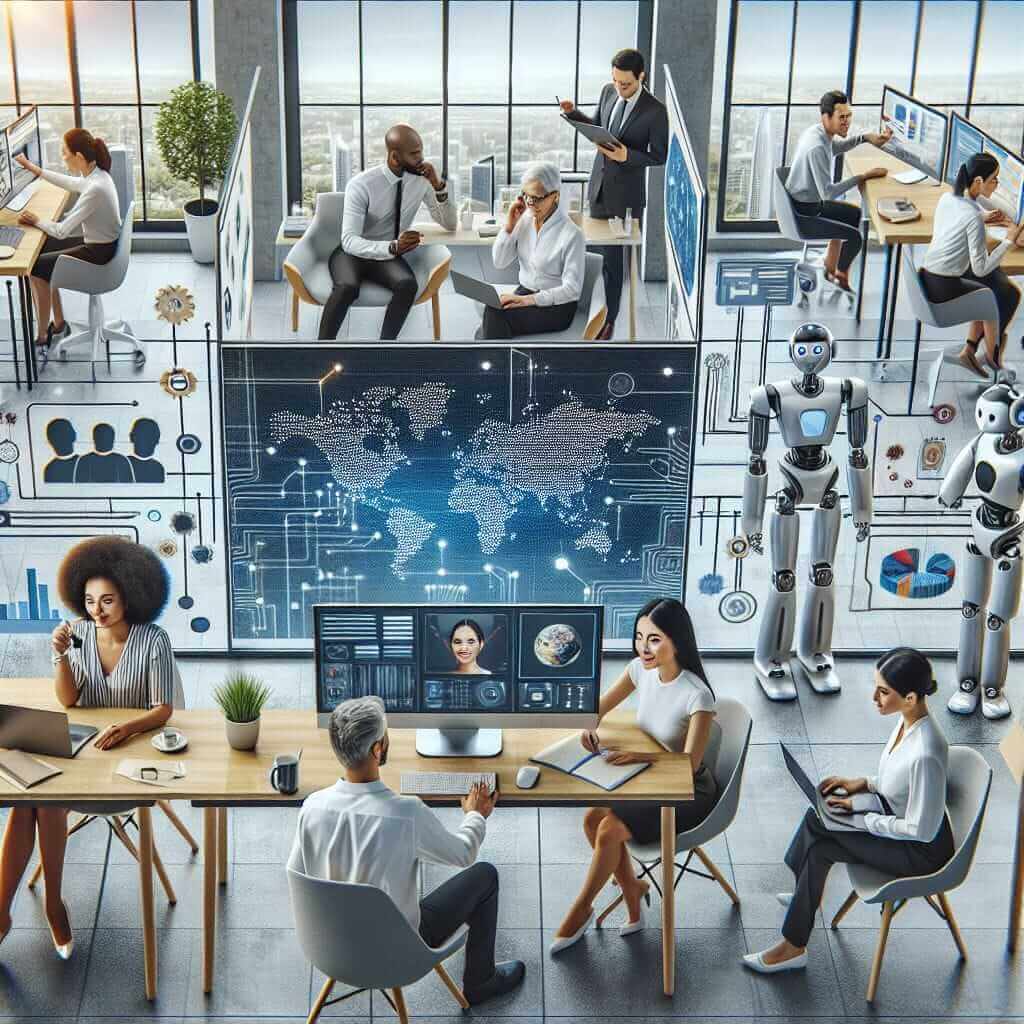The IELTS Reading test is designed to evaluate your reading skills, including your ability to comprehend, interpret, and analyze written English in a variety of contexts. One trending topic that has recently gained immediate relevance is “How is digital transformation affecting the workforce?” Considering the ongoing and rapid advancements in technology, this subject has appeared frequently in various forms on the IELTS Reading test.
Given its prevalent nature and the global shift towards digitalization, it is highly likely that you may encounter this topic in future IELTS exams. This article aims to aid IELTS aspirants in understanding how to tackle such reading materials effectively while also providing a comprehensive reading exercise designed to mimic a real IELTS Reading test.
Digital Transformation and its Effect on the Workforce
Reading Passage
Digital Transformation: A Shift in Workforce Paradigms
The rapid advancement in digital technologies has significantly reshaped the workforce across various industries. From automation to artificial intelligence (AI), these technological revolutions are driving profound shifts in job structures, skill requirements, and organizational operations.
One of the most notable impacts of digital transformation is the automation of routine tasks. According to a study by McKinsey, nearly every occupation has elements that can be automated. For instance, data entry, a task that used to require substantial human effort, can now be efficiently managed by AI algorithms. Consequently, many low-skill jobs are becoming obsolete, while the demand for high-skill jobs is surging.

Besides automation, the advent of digital tools has facilitated remote work, altering traditional office environments. Technologies like cloud computing, video conferencing, and collaborative software have made it possible for businesses to function smoothly without requiring employees to be physically present. This flexibility not only enhances productivity but also improves work-life balance.
Digital transformation also necessitates new skill sets. Skills such as data analysis, digital marketing, and cybersecurity are in high demand as companies strive to stay competitive. Hence, continuous learning and upskilling have become crucial for employees to remain relevant in the modern job market.
However, despite these advancements, digital transformation poses challenges. One significant issue is the digital divide, where there is an unequal access to technology among different socioeconomic groups. This disparity can exacerbate unemployment rates in less technologically advanced regions, widening the gap between the affluent and the underprivileged.
In conclusion, digital transformation is a double-edged sword. While it offers numerous benefits like enhanced efficiency, flexibility, and new job opportunities, it also presents challenges such as job displacement and digital inequality. As the world continues to embrace these technological changes, a balanced approach is essential to harness its full potential while mitigating its adverse effects.
Questions (Medium Text)
Multiple Choice
-
What is one major impact of digital transformation mentioned in the passage?
- A) Decrease in overall employment
- B) Automation of routine tasks
- C) Increased manual labor
- D) Reduction in the need for technology
-
According to the passage, which sector sees a high demand for new skill sets due to digital transformation?
- A) Agriculture
- B) Manufacturing
- C) Information Technology
- D) Hospitality
Identifying Information (True/False/Not Given)
-
Traditional office environments have been unaffected by digital transformation.
- A) True
- B) False
- C) Not Given
-
The digital divide has no impact on employment rates.
- A) True
- B) False
- C) Not Given
Matching Headings
- Match the following headings to their corresponding paragraphs:
- i. Job Automation
- ii. Remote Work and Flexibility
- iii. New Skill Requirements
- iv. Challenges of Digital Transformation
- v. Conclusion
Sentence Completion
- Digital transformation has required employees to focus on ____ to stay competitive.
- Despite the benefits, one challenge mentioned is the ____.
Answer Key and Explanations
-
B) Automation of routine tasks
- Explanation: The passage discusses how automation is one of the major impacts of digital transformation.
-
C) Information Technology
- Explanation: The text specifically highlights the demand for skills like data analysis and cybersecurity.
-
B) False
- Explanation: The passage states that traditional office environments have been altered by technologies like cloud computing.
-
B) False
- Explanation: The text mentions that the digital divide can exacerbate unemployment rates.
-
- i. Job Automation: Paragraph discussing automation of routine tasks.
- ii. Remote Work and Flexibility: Paragraph discussing the shift towards remote work.
- iii. New Skill Requirements: Paragraph discussing the necessity for new skills.
- iv. Challenges of Digital Transformation: Paragraph discussing issues like the digital divide.
- v. Conclusion: The concluding paragraph.
-
continuous learning and upskilling
- Explanation: The passage talks about the importance of continuous learning to stay relevant.
-
digital divide
- Explanation: The passage highlights this challenge and its impact on socioeconomic groups.
Common Mistakes and Tips
- Misinterpreting complex sentences or not understanding the overall context can lead to wrong answers.
- Avoid spending too much time on a single question. Time management is crucial.
- Practice skimming and scanning techniques to locate information quickly.
Vocabulary Focus
- Automation (noun): /ˌɔːtəˈmeɪʃn/ – The use of largely automatic equipment in a system of operation or production.
- Artificial Intelligence (AI) (noun): /ˌɑrtɪˈfɪʃəl ˌɪntəˈdʒɛnsl/ – The simulation of human intelligence by machines.
- Digital Divide (noun): /ˈdɪdʒɪtl dɪˈvaɪd/ – The gap between individuals who have access to modern information and communication technology and those who do not.
Grammar Focus
- Relative Clauses: These clauses provide additional information about a noun. Example: “Digital tools that facilitate remote work…”
- Passive Voice: Often used in formal or academic writing. Example: “Routine tasks are being automated by AI.”
Advice for High IELTS Reading Scores
- Regularly practice with high-quality reading materials.
- Build a robust vocabulary by reading diverse genres.
- Focus on understanding the main ideas, supporting details, and the writer’s tone and purpose.